Abstract
1. Ventilation was measured in eleven healthy term infants during both quiet and active sleep, using the trunk plethysmograph, and instantaneous heart rate was derived from the electrocardiogram. Variations in individual respiratory and cardiac cycles were compared in each sleep state, and cross-correlations between ventilation and heart rate were used in the analysis of the data. 2. It was found that heart rate and respiratory rate were higher and more variable during active than during quiet sleep, with a small reduction in tidal volume. 3. Cross-correlations showed that respiratory sinus arrhythmia was present in both sleep states, but was more marked during quiet sleep. 4. Running cross-correlations using a 5 s window showed that phase relationships between ventilation and heart rate, were, on the whole, stable during quiet sleep, but markedly unstable during active sleep. 5. It is concluded that in the investigation of respiratory sinus arrhythmia in the new-born, it is important to take account of sleep state, the methods of measuring ventilation and heart rate, and to use analytical techniques suited to the specific purpose of the study. 6. Respiratory sinus arrhythmia is considered to be due to an interaction between systems controlling breathing and those controlling the cardiovascular system, and that this interaction is affected by sleep state.
Full text
PDF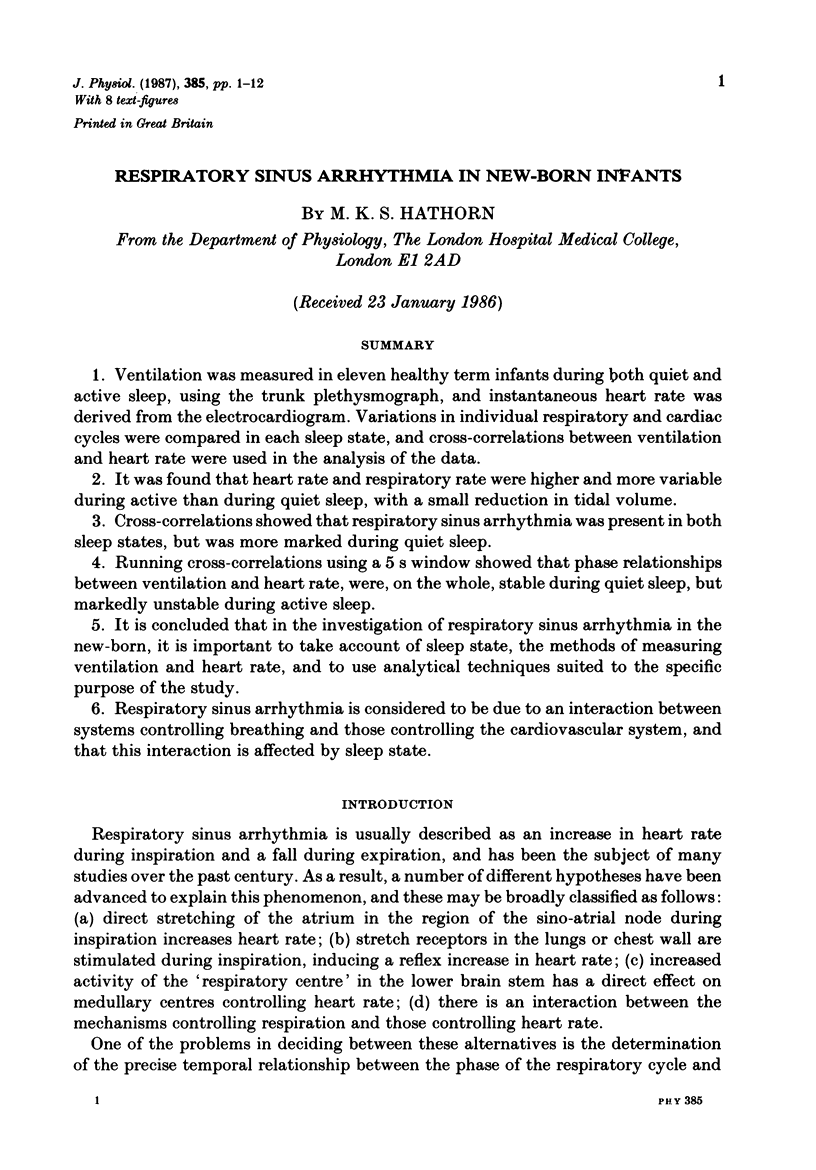
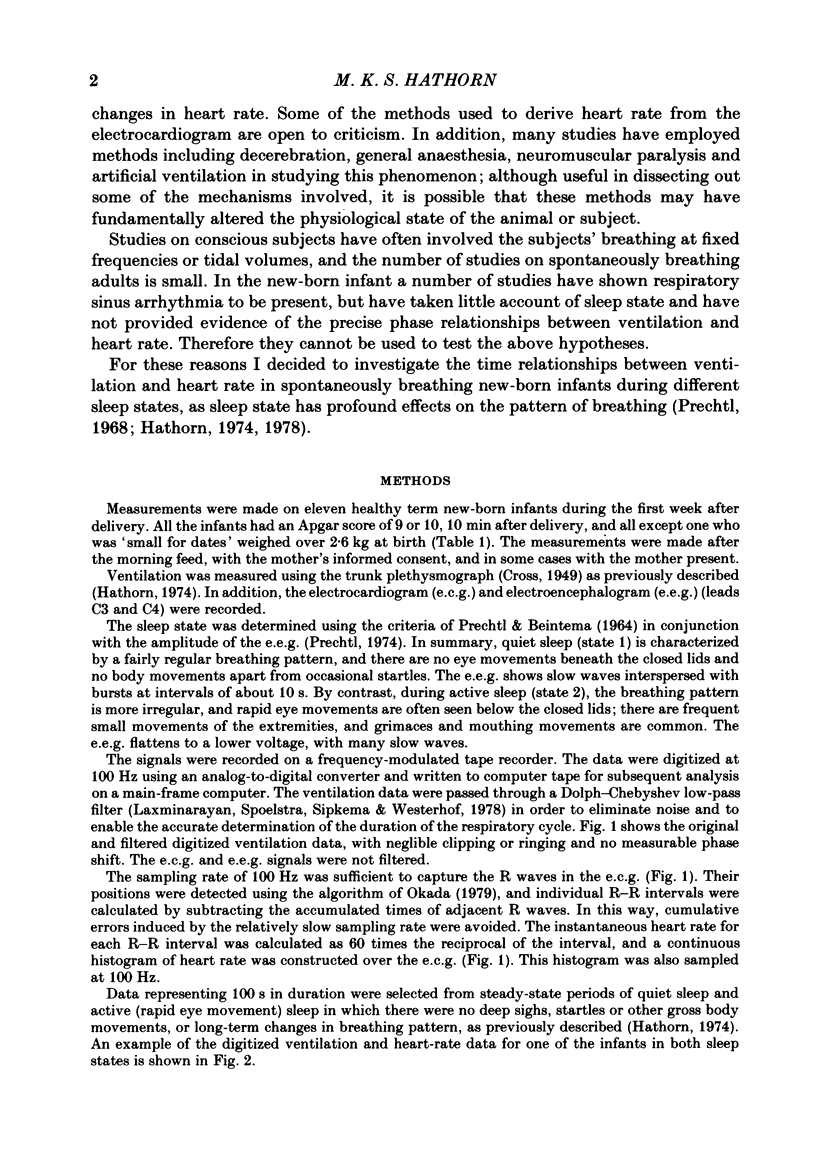
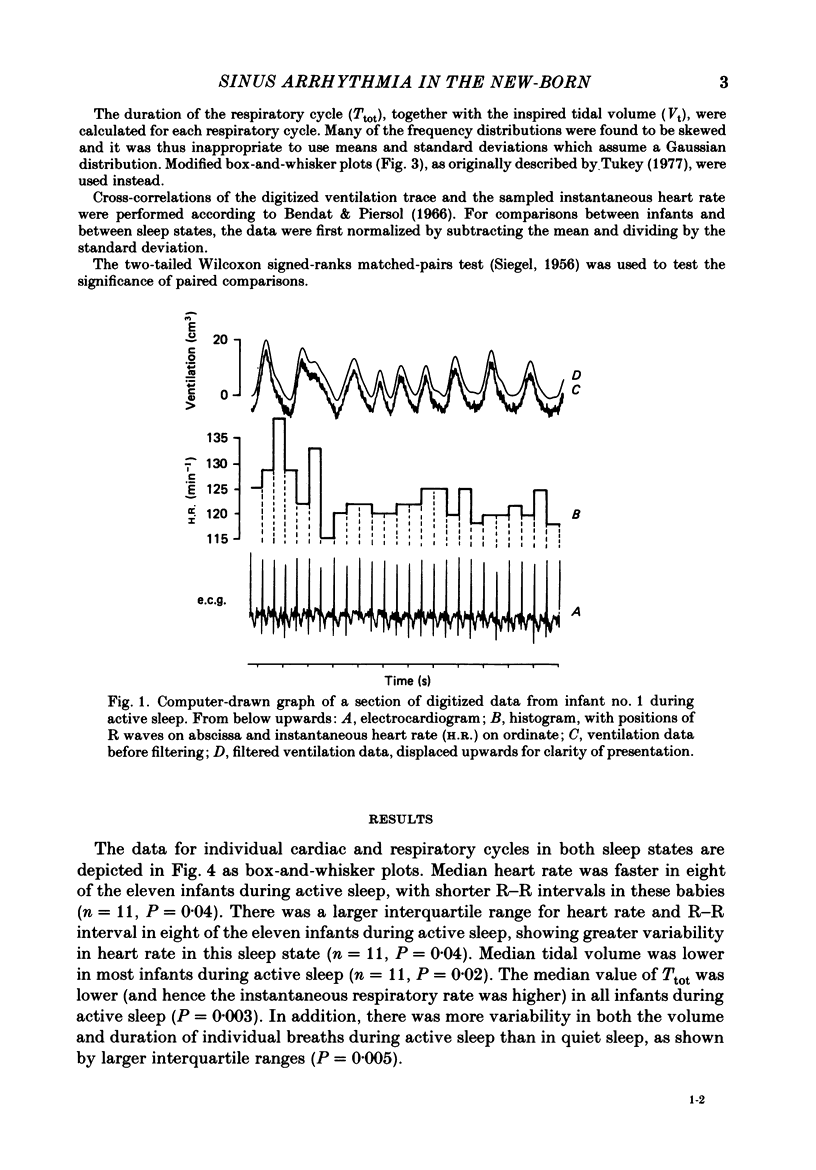



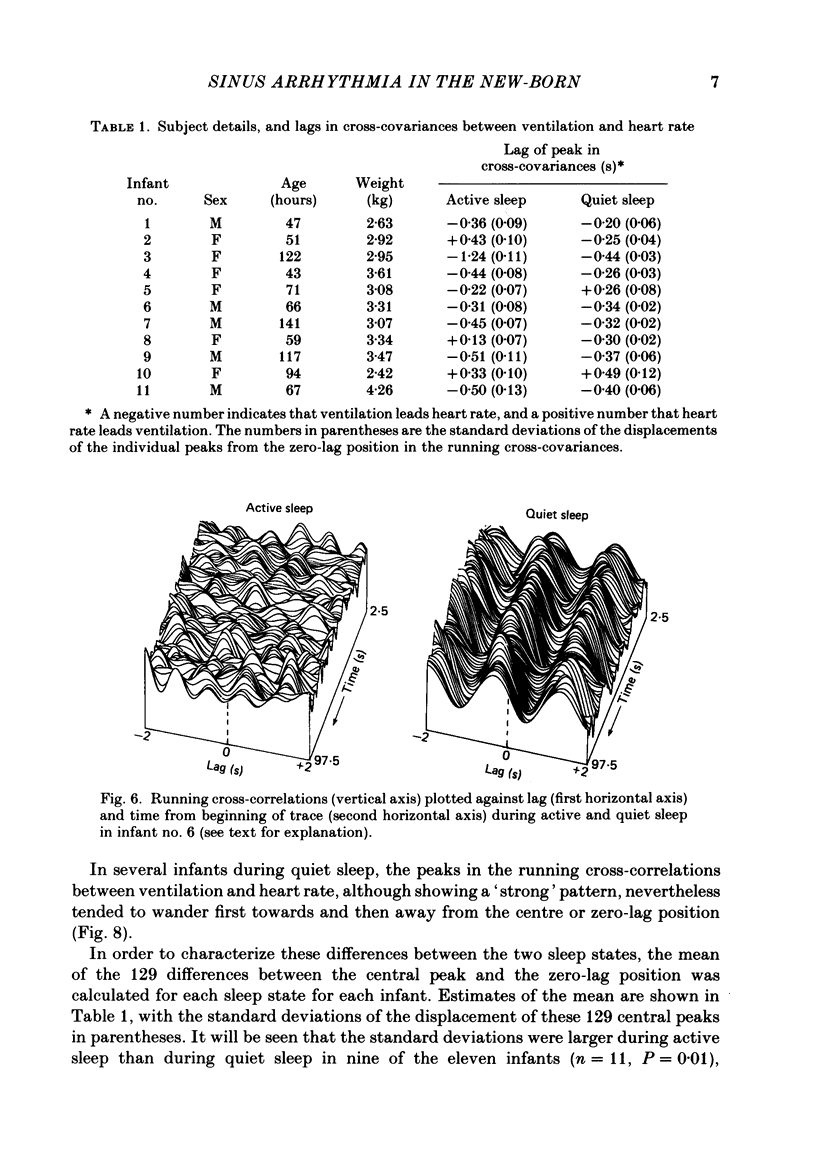
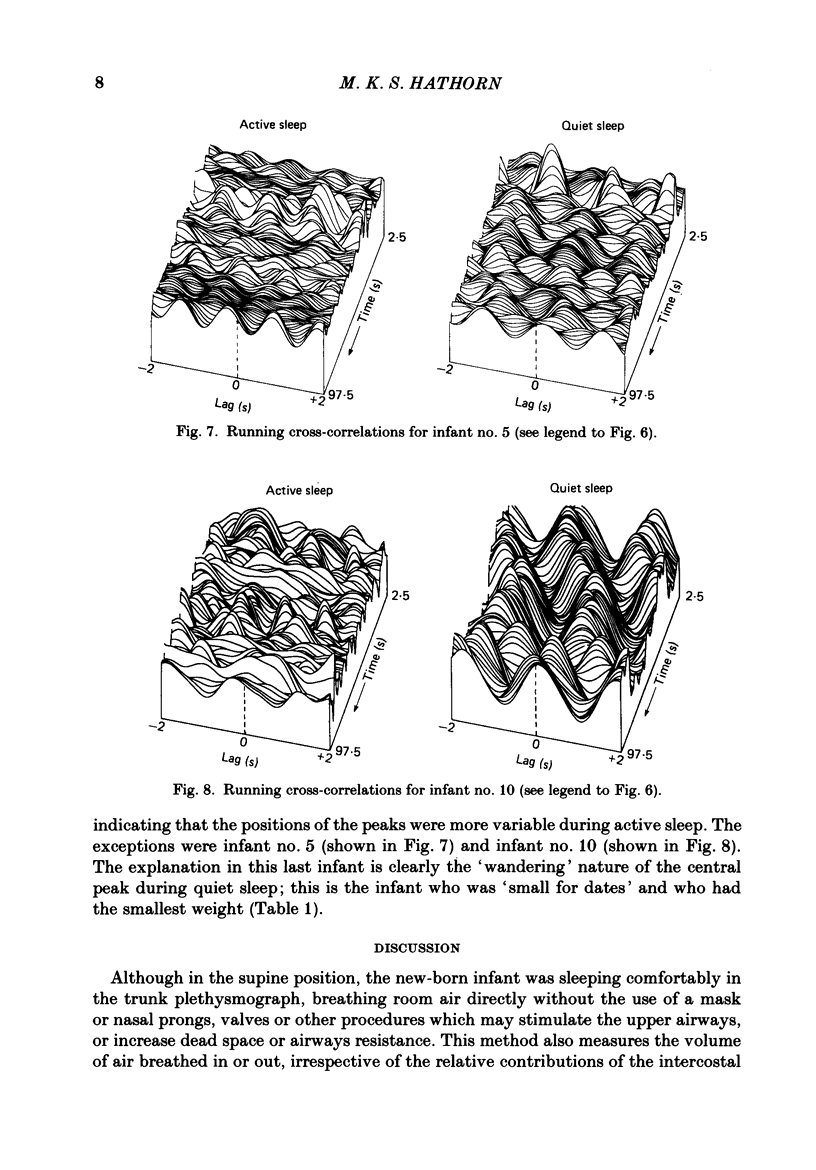
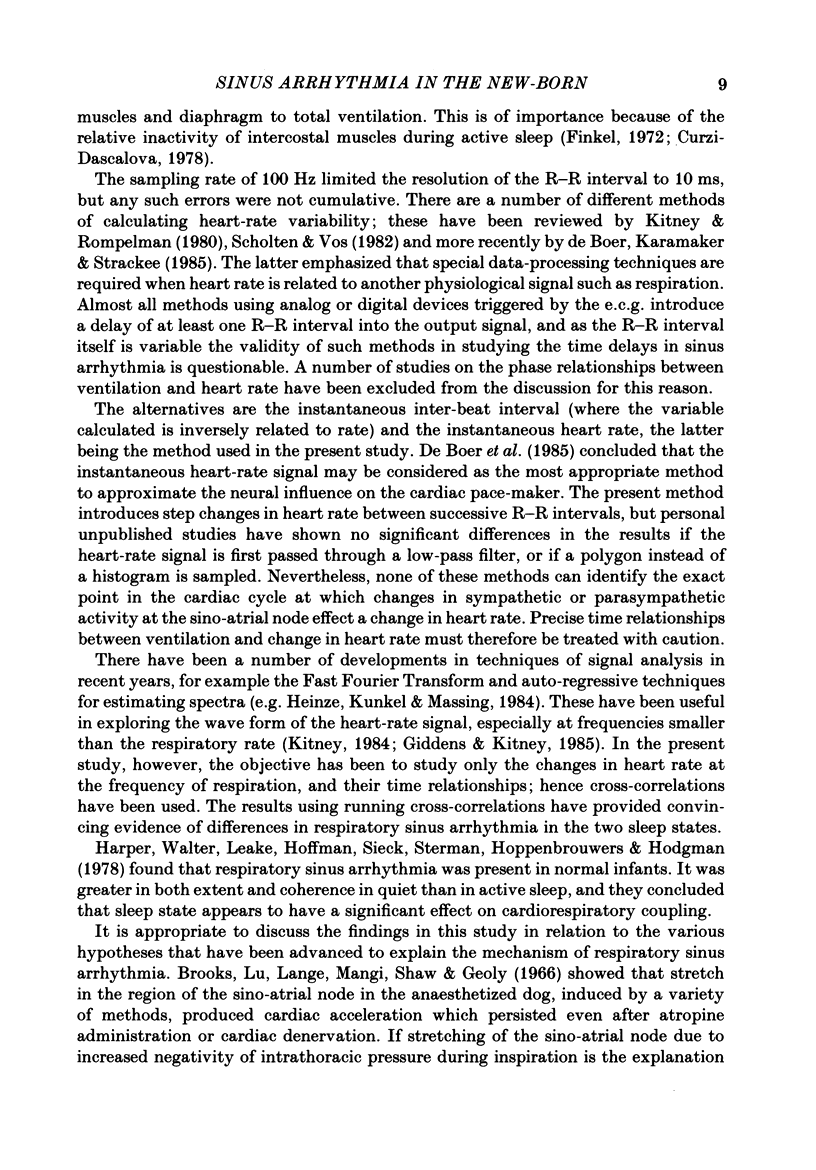
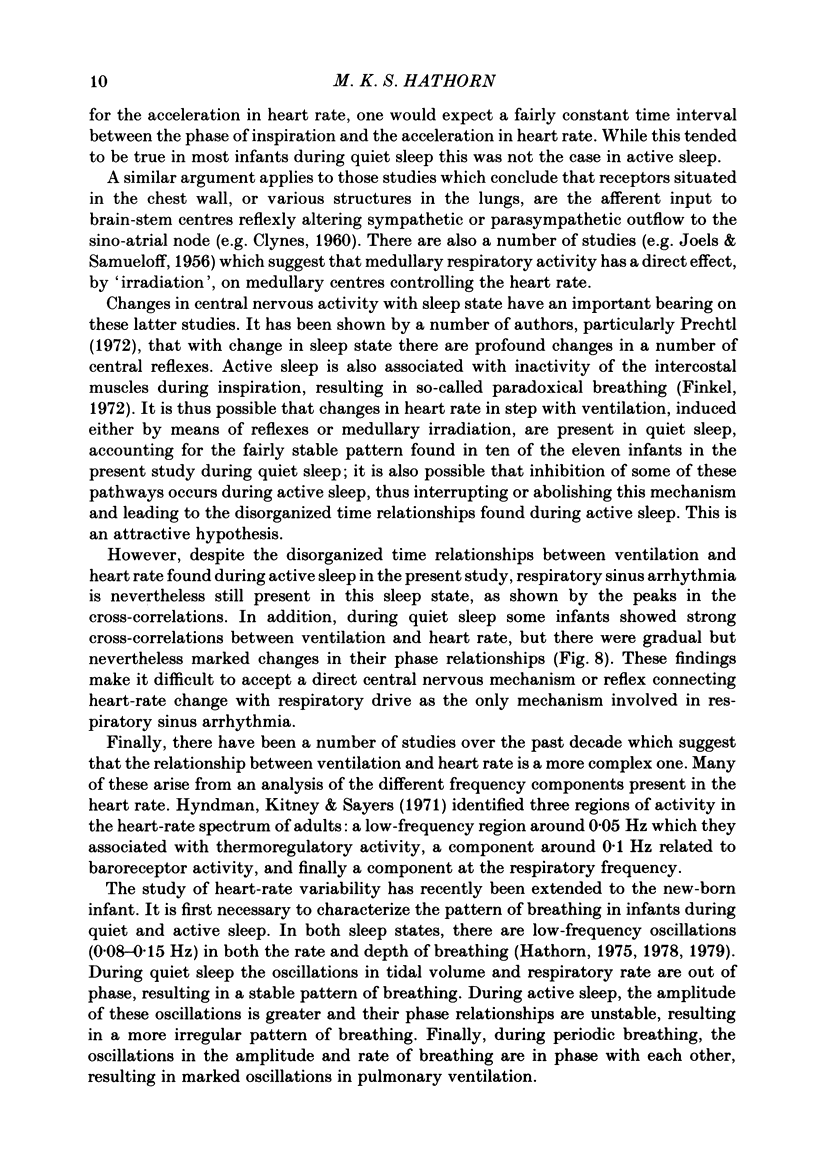
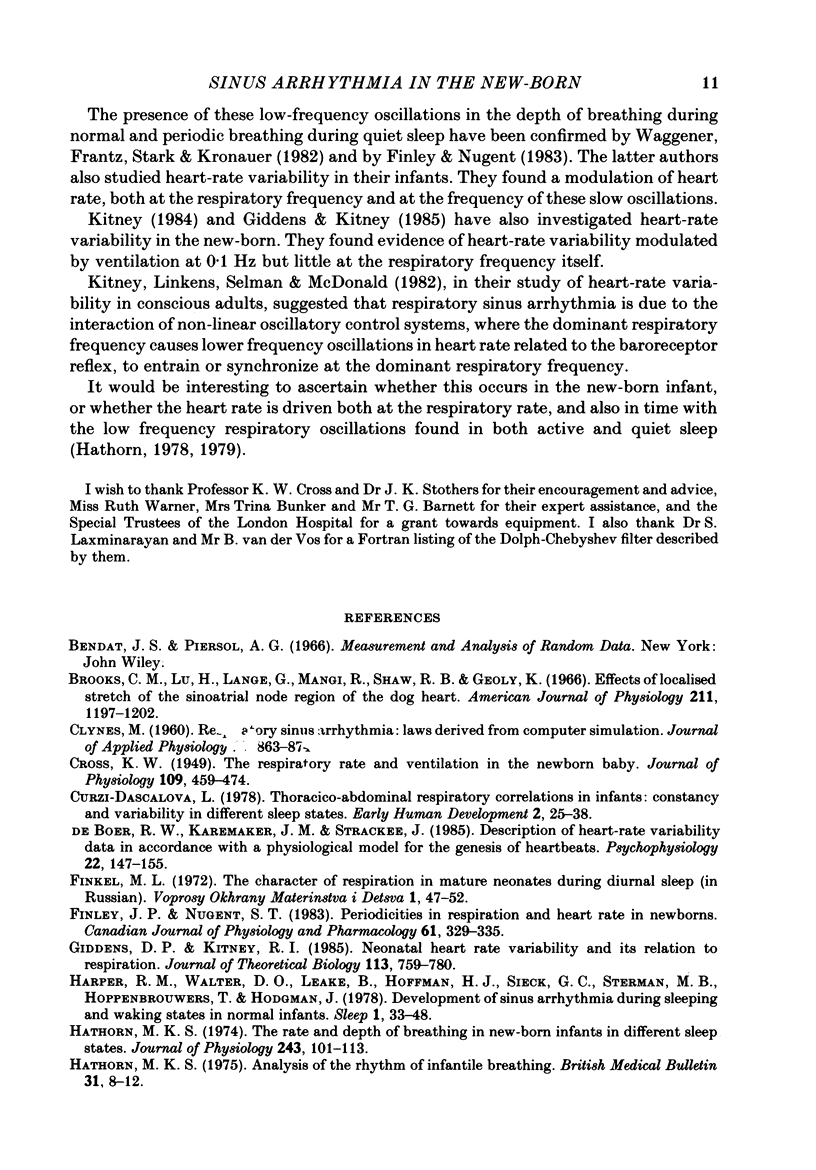

Selected References
These references are in PubMed. This may not be the complete list of references from this article.
- Brooks C. M., Lu H. H., Lange G., Mangi R., Shaw R. B., Geoly K. Effects of localized stretch of the sinoatrial node region of the dog heart. Am J Physiol. 1966 Nov;211(5):1197–1202. doi: 10.1152/ajplegacy.1966.211.5.1197. [DOI] [PubMed] [Google Scholar]
- CROSS K. W. The respiratory rate and ventilation in the newborn baby. J Physiol. 1949 Sep;109(3-4):459–474. doi: 10.1113/jphysiol.1949.sp004409. [DOI] [PMC free article] [PubMed] [Google Scholar]
- Curzi-Dascalova L. Thoracico-abdominal respiratory correlations in infants: constancy and variability in different sleep states. Early Hum Dev. 1978 Apr;2(1):25–38. doi: 10.1016/0378-3782(78)90050-6. [DOI] [PubMed] [Google Scholar]
- Finley J. P., Nugent S. T. Periodicities in respiration and heart rate in newborns. Can J Physiol Pharmacol. 1983 Apr;61(4):329–335. doi: 10.1139/y83-050. [DOI] [PubMed] [Google Scholar]
- Giddens D. P., Kitney R. I. Neonatal heart rate variability and its relation to respiration. J Theor Biol. 1985 Apr 21;113(4):759–780. doi: 10.1016/s0022-5193(85)80192-2. [DOI] [PubMed] [Google Scholar]
- Harper R. M., Walter D. O., Leake B., Hoffman H. J., Sieck G. C., Sterman M. B., Hoppenbrouwers T., Hodgman J. Development of sinus arrhythmia during sleeping and waking states in normal infants. Sleep. 1978 Sep;1(1):33–48. doi: 10.1093/sleep/1.1.33. [DOI] [PubMed] [Google Scholar]
- Hathorn M. K. Analysis of periodic changes in ventilation in new-born infants. J Physiol. 1978 Dec;285:85–99. doi: 10.1113/jphysiol.1978.sp012559. [DOI] [PMC free article] [PubMed] [Google Scholar]
- Hathorn M. K. Analysis of the rhythm of infantile breathing. Br Med Bull. 1975 Jan;31(1):8–12. doi: 10.1093/oxfordjournals.bmb.a071246. [DOI] [PubMed] [Google Scholar]
- Hathorn M. K. The rate and depth of breathing in new-born infants in different sleep states. J Physiol. 1974 Nov;243(1):101–113. doi: 10.1113/jphysiol.1974.sp010744. [DOI] [PMC free article] [PubMed] [Google Scholar]
- Heinze H. J., Künkel H., Massing W. Detection of periodic signals in noise: an iterative procedure. Comput Programs Biomed. 1984;19(1):55–59. doi: 10.1016/0010-468x(84)90038-2. [DOI] [PubMed] [Google Scholar]
- Hyndman B. W., Kitney R. I., Sayers B. M. Spontaneous rhythms in physiological control systems. Nature. 1971 Oct 1;233(5318):339–341. doi: 10.1038/233339a0. [DOI] [PubMed] [Google Scholar]
- JOELS N., SAMUELOFF M. The activity of the medullary centres in diffusion respiration. J Physiol. 1956 Aug 28;133(2):360–372. doi: 10.1113/jphysiol.1956.sp005592. [DOI] [PMC free article] [PubMed] [Google Scholar]
- Laxminarayan S., Spoelstra A. J., Sipkema P., Westerhof N. Transpulmonary pressure and lung volume of the cat and the newborn: removal of cardiac effects with a digital filter. Med Biol Eng Comput. 1978 Jul;16(4):397–407. doi: 10.1007/BF02442657. [DOI] [PubMed] [Google Scholar]
- Okada M. A digital filter for the QRS complex detection. IEEE Trans Biomed Eng. 1979 Dec;26(12):700–703. doi: 10.1109/tbme.1979.326461. [DOI] [PubMed] [Google Scholar]
- Prechtl H. F. The behavioural states of the newborn infant (a review). Brain Res. 1974 Aug 16;76(2):185–212. doi: 10.1016/0006-8993(74)90454-5. [DOI] [PubMed] [Google Scholar]
- Scholten C. A., Vos J. E. Comparative investigation of the mathematical properties of some descriptors for biological point processes: examples from the human newborn. Med Biol Eng Comput. 1982 Jan;20(1):89–93. doi: 10.1007/BF02441856. [DOI] [PubMed] [Google Scholar]
- Waggener T. B., Frantz I. D., 3rd, Stark A. R., Kronauer R. E. Oscillatory breathing patterns leading to apneic spells in infants. J Appl Physiol Respir Environ Exerc Physiol. 1982 May;52(5):1288–1295. doi: 10.1152/jappl.1982.52.5.1288. [DOI] [PubMed] [Google Scholar]
- de Boer R. W., Karemaker J. M., Strackee J. Description of heart-rate variability data in accordance with a physiological model for the genesis of heartbeats. Psychophysiology. 1985 Mar;22(2):147–155. doi: 10.1111/j.1469-8986.1985.tb01577.x. [DOI] [PubMed] [Google Scholar]


